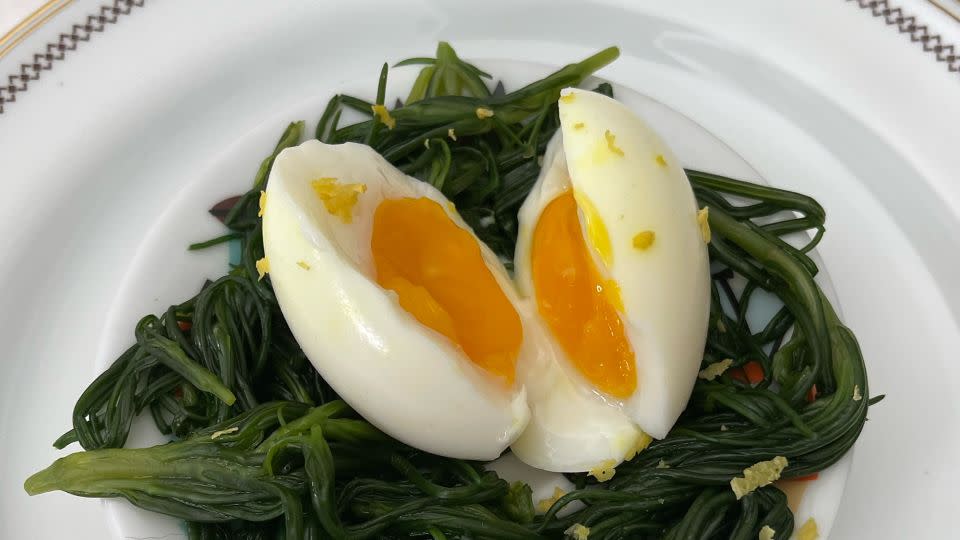If you think you have your egg-boiling technique down to a science, there is still a chance you haven’t prepared the “perfect” boiled egg.
Boiling an egg flawlessly is challenging because the albumen — or egg white — and the yolk have different compositions, requiring them to be cooked at varying temperatures to achieve ideal taste and consistency.
But now, scientists say they have officially cracked the code with a technique known as periodic cooking. This new method involves alternating the eggs between hot and lukewarm water cycles to optimally cook the albumen and yolk simultaneously without separating them, according to a new study published February 6 in the journal Communications Engineering.
Not only does periodic cooking produce the ideal texture and flavor for both the albumen and yolk, but it also helps the egg retain the greatest amount of nutrients with proven health benefits compared with other popular methods such as hard-boiling or sous vide, the study authors wrote.
“As a chef, this method makes perfect sense,” Micah Siva, a San Francisco-based registered dietitian and recipe writer who was not involved in the study, said via email. “People often forget that cooking is incredibly scientific … and adjusting cooking temperature to the properties and structures of the proteins within the egg can improve the quality.”
The best part? You don’t have to imagine it — you can try periodic cooking at home. Dr. Ernesto Di Maio, the study’s lead author, noted the experiment wasn’t conducted using fancy lab equipment but rather in his home kitchen. All you need is 32 minutes and a bit of patience.
Cooking process for the perfect boiled egg
To cook the ultimate boiled egg, the researchers could have relied on trial and error, testing hundreds of eggs, said Di Maio, program manager of the bachelor and master’s materials engineering program at Italy’s University of Naples Federico II.
Instead, the team developed mathematical models and simulations to predict how heat transfers through the egg, which helped them identify the ideal cooking conditions for both the albumen and yolk. With these tools, Di Maio and his colleagues input factors such as water temperature and density to help them decide the time increments to switch the eggs between hot and lukewarm water, he said.
To test periodic cooking, the team filled a kitchen pot with tap water and heated it to the desired temperature on the stovetop. The researchers placed a food thermometer in both the hot and lukewarm water to ensure consistent temperatures throughout the cooking process.
The team then cooked fresh, shell-on hen eggs using four methods: hard-boiling, soft-boiling, sous vide and the new periodic cooking technique. In total, Di Maio and his colleagues prepared 160 eggs, using 40 eggs per cooking method.
The traditional methods served as control samples to compare temperature profiles, texture and nutrient retention.
Hard-boiled eggs were cooked for 12 minutes, soft-boiled ones for six minutes and sous vide eggs were prepared at 65 degrees Celsius (149 degrees Fahrenheit) for one hour.
For the periodic method, scientists alternated submerging the eggs for two minutes in boiling water at 100 C (212 F) and lukewarm water at 30 C (86 F). This cycle was repeated eight times for 32 minutes.




